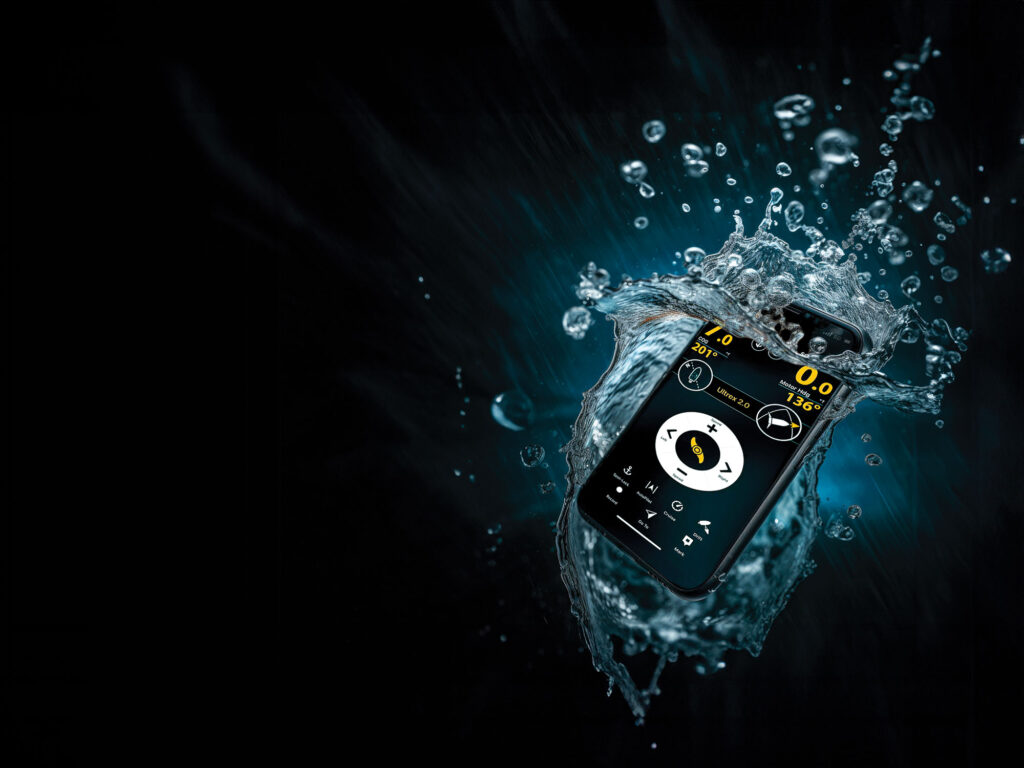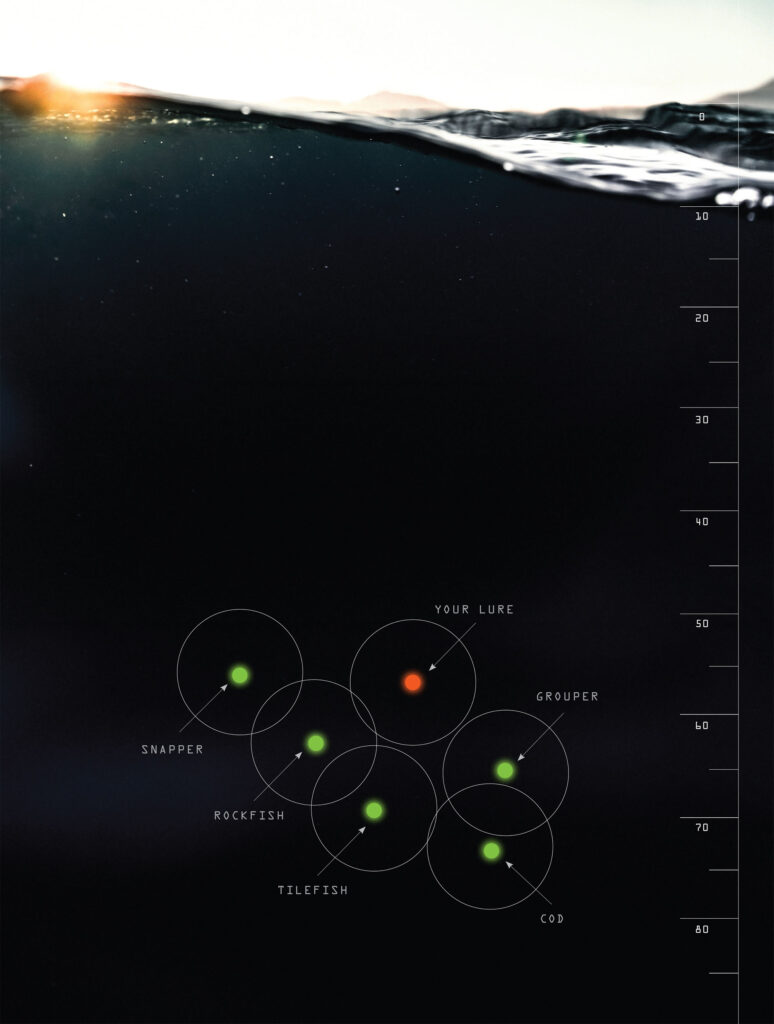Today, technology accelerates so quickly that few can predict the future. That applies to fishing tackle, marine electronics, and fishing boats and motors. Developments that we can scarcely dream of might revolutionize the very nature of how we boat, how we find fish and how we catch them. However, we can imagine. And the best clues to imagining the future often lie in emerging technologies of the present.
This is what NextMarine is all about. We launch it with this feature focusing on six dramatic developments benefiting saltwater anglers. Yet there is so much more. That’s why in each coming issue, you will find a NextMarine department in which we will explore the next big thing.
We will deliver insight and commentary from the executives, engineers and scientists responsible for these advancements. We will also report on our own on-water experiences with new technologies. For those still in the R&D phases, we will assess how the advancements might help you catch fish.
What’s more, we plan to complement our written coverage with video podcast interviews with technology and scientific leaders as they reveal their visions of the future. In the meantime, please enjoy the read as we inaugurate NextMarine—a glimpse into the future of saltwater angling.

Raw Electric Power
Raw horsepower no longer has to come from dinosaur bones. We’re talking triple-digit power, not just something for the back of a canoe or skiff. Heads turned with the introduction of Vision Marine’s 180E, an electric outboard motor with 180 continual ponies, not just peak power.
So, how does a boater refuel their electric outboard? The 180E can be charged from shore power with help from its onboard system. A 220-volt outlet (what your dryer runs on) is a better option, but 120-volt outlets work, though plan on spending seven or eight hours for a full charge. Vision Marine’s IP67-certified lithium batteries are built to withstand salt water, cooled by glycol (the main component in car antifreeze). A stainless-steel casing protects the power source from corrosion and physical damage.
Hole shots are similar to standard outboards, even if they sound a bit different. Anglers can expect a range of about 50 miles on one charge, depending on water conditions and a driver’s heavy hand.
Still, gas engines won’t be going away anytime soon. Challenges to electric outboards include limited range due to battery capacity, longer recharging times (when compared to refilling with gas), and higher upfront costs. Battery technology and infrastructure continue to advance, and that will only help make electric outboard engines more viable. But it’s a preference, and just like with cars and trucks, some boaters might never pick an electric outboard. Still, Tesla charging stations are as common today in parking lots as pigeons, so don’t be surprised to see outboard charging stations someday at your local marina. —Sam Hudson

Forward-Facing Sonar
I was sitting atop the ice on Otsego Lake, watching lakers attack my jig as it danced around the 140-foot mark on the screen of the flasher, movements indicated in real time by the changing colors. I remember thinking, The future is now. I couldn’t have been more wrong.
Fish-finder tech has been growing in leaps and bounds since Lowrance introduced the Fish Lo-K-Tor way back in 1957. For most of the 20th century, refinements consisted of increased depth capabilities and improvements in displays.
But in the early 2000s, manufacturers entered an arms race that provided rapid advancements. Humminbird introduced Side Imaging. Shortly after, Lowrance provided a 3D view 600 feet out, port and starboard. Humminbird one-upped them with 360 Imaging, for an immersive view around the boat. Then Garmin’s Panoptix merged sonar with GPS, for better mapping and fish-finding abilities.
Now forward-facing sonar is giving anglers a look into the future, so to speak. Unlike traditional units that display what the boat has driven or floated over, forward-facing units show what’s in front of the boat—often in incredible detail. This gives anglers an advantage because they can see fish and cast to them before they get near.
Critics of forward-facing sonar believe it will make fishing too easy; the new tech is even banned from some tournaments. But this has been a common refrain, with detractors of loran stating that the positioning system would make it too easy to go back to fish-holding structures, and Spot-Lock trollers would decimate bottom species. Fortunately, those haven’t come to fruition. Like it or not, forward-facing sonar is the wave of the future. —Joe Albanese

Satellite Imaging and Communication
The world is shrinking. This is partly due to the ever-increasing number of satellites crisscrossing the sky to provide weather forecasts, communications, positioning info and imaging.
Anglers used to rely on marine radios, but even the most powerful can only reach antennas in a direct line of sight. Cellphones don’t fare much better, losing signal as they stray from port. But satellite tech lets you communicate anywhere you have a clear view of the sky. Satellite messengers, like those from Garmin and ACR, send and receive texts, even providing authorities with your exact location in an emergency. Yamaha’s Siren system can be equipped with satellite equipment, letting you monitor your boat anywhere. Anglers are even adding Starlink to their boats, getting high-speed internet on the open seas.
Advances in satellite imaging are also paying dividends to anglers, helping find water-surface-temperature breaks, high chlorophyll and plankton concentrations, and weed lines without steaming around for hours. Subscription services from ROFFS and SiriusXM Marine’s Fish Mapping can put all of this info right on your MFD. SiriusXM’s Fish Mapping can even provide “30-meter subsurface sea temperatures,” showing cold-water upwellings that can slow a bite. —Joe Albanese

Future Troll
Trolling motors are so versatile these days, I’m not sure why they don’t have a new name. “Positioning motor” has an odd charm that I’m sure will never catch on. I’m old enough to remember when wireless remotes were a major advancement. More recently, GPS anchoring took anglers by storm. Built-in and programmable modes seem nearly endless, allowing anglers to set drifts, specific routes and headings easily. After checking out the newest trolling motor offerings at ICAST 2023, manufacturers show no signs of stopping in tech advancement.
A Silent Assassin
At least three brands—Garmin, Minn Kota and Power-Pole—have saltwater trolling motors featuring brushless technology on the market. Why is that important? It’s downright scary how silent they sound in the water. Brushless motors trump conventional options as the silent assassins. Unlike traditional trolling motors, brushless motors operate without physical brushes and commutators. Instead, they use electronic commutation for more efficient and reliable performance without the noise. Will anglers be able to sneak up on bonefish and permit now without a push pole?
Offshore Boats Better Get Ready
Across the industry, there’s an obvious pattern of beefier shafts in strength and length for trolling motors. That means legit offshore boats—not just bay boats and hybrids—might soon be adorned with a trolling motor or two. Some already are. Garmin’s Force Kraken is available in 63- and 75-inch shaft lengths, high-powered with 100 pounds of thrust. The Power-Pole Move PV’s longest shafts are 60 and 72 inches, built from aerospace-grade titanium. And Minn Kota’s available lengths on the Riptide Instinct Quest and Terrova Quest motors are 60, 72, 87 and 100 inches, all built into a carbon-fiber-infused shaft. Have you tried trolling for kingfish or sailfish with an actual trolling motor? Seems entirely possible these days.
Full Connectivity
The days of needing a handle on a trolling motor are long gone. You don’t have to camp out at the bow anymore. For example, the Minn Kota Riptide Instinct Quest has push-button command available anywhere on the boat. Stow, deploy or trim the motor up and down from your remote, foot pedal, Humminbird fish finder, or One-Boat Network app. Ask a fishing captain or tournament bass angler—full integration of electronics across the boat is essential. Then there’s transducer incorporation. Power-Pole’s Move ZR motor has the option to integrate a Lowrance HDI xSonic transducer that supports medium and high chirp, plus DownScan Imaging. Some Garmin Kraken models include a built-in GT56UHD all-in-one transducer with Ultra High-Definition ClearVu and SideVu scanning sonar, along with chirp traditional sonar. Garmin LiveScope? Of course, Garmin already has a cable accessory you can purchase. —Sam Hudson

Marine Lithium Batteries
Boating anglers have long dreamed of boundless onboard electrical power. While that might not ever come true, lithium battery technology represents a major step in the right direction. Instead of the old heavy, short-lived lead-acid batteries we all know and hate, lithium-iron-phosphate (LiFePO4) batteries weigh less than half, pack more than twice the reserve power, and offer a service life of a decade or more.
LiFePO4 tech has proved safe and is advancing every day, resulting in ever-increasing capacities, greater voltage ratings, and new features such as Bluetooth monitoring so you can quickly check how much power remains using a mobile app. And while they were initially quite expensive, the cost has been trending downward over the past two years, thanks to the growing number of companies offering LiFePO4 models.
This technology is largely not suitable in starting batteries, but it is immensely applicable to deep-cycle duties for powering saltwater trolling motors and onboard systems such as livewell pumps, windlasses and marine electronics. When it comes to marine LiFePO4 batteries, the future is now. The only question that remains is: What new advancements will this technology bring boating anglers next? —Jim Hendricks
Read Next: 10 New Marine Electronics Developments

Reels With Fish Finders?
Fishing reels with built-in fish finders are more than just the stuff of dreams. These electric reels from Shimano already exist, though available only in the fabled Japanese domestic market (JDM). Detailed and dynamic fish-finder images appear on the color LCD screens of reels as large as the big Shimano Beastmaster 12000 and as small as the nimble Beastmaster 3000 EJ, neither of which are available at this time in the US tackle market.
Shimano calls these fish-finder displays Tankenmaru screens, but the reels don’t have sonar systems. They pick up the data wirelessly from an onboard fish finder, which is known as a Tankenmaru parent unit. The specialized master fish finders that we have seen employed with the Beastmaster reels were engineered by Furuno, but some were branded with the Shimano name. The sonar systems use Wi-Fi to transmit the fish-finder data in real time, allowing the angler to see their bait or lure on the screen, as well as any fish showing an interest hundreds of feet below the boat.
We have seen a lot of cool JDM fishing tackle in recent years, but the integration of reels and marine electronics for pinpoint deep-drop fishing is clearly next level. —Jim Hendricks









